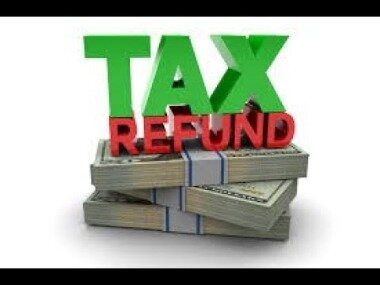How to Calculate Dividends: Formula for Using Balance Sheet The Motley Fool
Contents:


Ex-dividend is a classification in stock trading that indicates when a declared dividend belongs to the seller rather than the buyer. Investopedia requires writers to use primary sources to support their work. These include white papers, government data, original reporting, and interviews with industry experts. We also reference original research from other reputable publishers where appropriate. You can learn more about the standards we follow in producing accurate, unbiased content in oureditorial policy.
25 Best Stocks For Dividends – Yahoo Finance
25 Best Stocks For Dividends.
Posted: Sun, 26 Mar 2023 07:00:00 GMT [source]
You may need to create some of these accounts if your company has not issued cash dividends or stock dividends in the past. When a cash dividend is declared by the board of directors, debit the Retained Earnings account and credit the Dividends Payable account, thereby reducing equity and increasing liabilities. Thus, there is an immediate decline in the equity section of the balance sheet as soon as the board of directors declares a dividend, even though no cash has yet been paid out. To record the accounting for declared dividends and retained earnings, the company must debit its retained earnings. It is because dividends, as mentioned above, are a decrease in the retained earnings of a company. Therefore, a debit in retained earnings balance means it decreases.
In a reverse stock split the reporting entity merges its outstanding shares to reduce the total number of shares outstanding and increase the per share stock price. We’ve presented two examples to help you better understand the accounting for dividends received. Both the two examples listed below represent how a company makes journal entries for its Dividend received. The date of record is when the business identifies the shareholders to be paid. Since shares of some companies can change hands quickly, the date of record marks a point in time to determine which individuals will receive the dividends.
Any net double entry accounting not paid to equity holders is retained for investment in the business. On the payment date, the following journal will be entered to record the payment to shareholders. On the date that the board of directors decides to pay a dividend, it will determine the amount to pay and the date on which payment will be made. The payment date is the date set by a company when it will issue payment on the stock’s dividend.
Dividends in Accounting
This includes the definition of dividend, dividend policies, and how to account for dividends and retained earnings. A high dividend payout ratio is good for short term investors as it implies a high proportion of the profit of the business is paid out to equity holders. However, a high dividend payout ratio leads to low re-investment of profits in the business which could result in low capital growth for both the business and investor.
The Best REIT Dividend For A Recession – Forbes
The Best REIT Dividend For A Recession.
Posted: Thu, 20 Apr 2023 14:41:00 GMT [source]
He has over 40 years of experience in business and finance, including as a Vice President for Blue Cross Blue Shield of Texas. He has a BBA in Industrial Management from the University of Texas at Austin. You can find most company’s dividends without having to calculate it, but you’ll be a better investor if you understand how to do it yourself. Dividends may also be paid in the form of other assets or additional stock.
Multiply the number of shares to be distributed by the market value of each share. This amount is one of the values that you will record in the following steps and represents the total book value of the stock dividend distribution. For example, imagine your company declares a cash dividend on February 1 that will be paid to shareholders on March 1 and that the date of record is set at February 15. Assume a corporation declares a cash dividend of $50,000 on its common stock. There are many reasons why a company needs to distribute dividends to its shareholders. First of all, shareholders need some form of return for their investment in a company.
AccountingTools
The second step is when the company pays dividends to its shareholders. Assuming it pays dividends in the form of cash, the company must credit its cash account, while also eliminating the balance in the dividends payable account created before. For instance, when the company in the above example pays its shareholders dividends of $10,000, it must use the following accounting treatment to record the transaction. When a company pays a dividend to its shareholders, it’s considered a distribution.
Usually, the board of directors approves a company’s dividends that it must pay to its shareholders. However, the shareholders of the company must also approve of the dividends before the company pays them. For the shareholders, dividends represent a type of reward, mostly in cash, that the company pays them for their investment.

The number of shares distributed will simply be the chosen percentage stock dividend (20% in our example) multiplied by the number of shares outstanding. So, in our example, you would credit cash for $5,000 and also debit dividends payable for $5,000 on the date of payment, March 1. One of the most useful reasons to calculate a company’s total dividend is to then determine the dividend payout ratio, or DPR. This measures the percentage of a company’s net income that is paid out in dividends. Dividends are also an important source of income for most shareholders.
Sure Dividend
In either case, the combination of the value of an investment in the company and the cash they hold will remain the same. Miller and Modigliani thus conclude that dividends are irrelevant, and investors shouldn’t care about the firm’s dividend policy because they can create their own synthetically. A high-value dividend declaration can indicate that the company is doing well and has generated good profits. But it can also indicate that the company does not have suitable projects to generate better returns in the future. Therefore, it is utilizing its cash to pay shareholders instead of reinvesting it into growth.
Below is a list and a brief description of the most common types that shareholders receive. AccountDebitCreditCash$15,000Share Investments$15,000As per the journal entry made above, the $15,000 of the Dividend received is recorded as the decrease of share investments. The final entry required to record issuing a cash dividend is to document the entry on the date the company pays out the cash dividend. AccountDebitCreditDividends payable000Cash000Although, the duration between dividend declared and paid is usually not long, it is still important to make the two separate journal entries. This is especially so when the two dates are in the different account period.

The Dividend refers to the earnings or portion of the profit that a company pays to its investors or shareholders. A dividend is distributed among the shareholders when the company generates a profit or accumulates the retained earnings. The Dividends Payable account records the amount your company owes to its shareholders. In the general ledger hierarchy, it usually nestles under current liabilities. As companies earn profits, they can choose to either reinvest those profits in the company or distribute them to shareholders in the form of dividends.
Dividend payouts may also help provide insight into a company’s intrinsic value. Many countries also offer preferential tax treatment to dividends, where they are treated as tax-free income. If a dividend payout is lean, an investor can instead sell shares to generate the cash they need.
What is a Dividend?
So, an organization should pay its dividends of time rather than erratic dividends. Your LLC directors determine to pay a dividend of $1-per-share or $100,000 in total. In this situation, the date the liability will be recorded in XYZ Company’s books is March 1 – the date of the Board’s original declaration. The market value of each share used should be the value that a share of the company trades for on the declaration date. How exactly these events are recorded is relatively simple, but depends largely on the type of dividend being issued. Chartered accountant Michael Brown is the founder and CEO of Double Entry Bookkeeping.
- This is not a requirement (except in the case of certain “preferred” shareholders), but some companies pride themselves and create trust in their shareholders by issuing dividends on a regular basis .
- First of all, shareholders need some form of return for their investment in a company.
- The last disadvantage is that company has to pay tax on the distribution of profit among its shareholder.
- One of the advantages of accounting for dividends is its ease in dealing with the complexities of dividend payments.
Similarly, the company must also create a liability for the amount of the declared dividend. For example, if a company declares dividends of $10,000, the accounting treatment will be as follows. Companies that adopt a stable dividend policy pay a fixed and predictable dividend to their shareholders after each dividend period. It is the most common policy among the types of dividends policies. Investors also prefer a stable policy for dividends as it is not volatile and can help them predict their returns.
License Content Availability
The date of record specifies the date by which a shareholder must own stock in order to qualify for the dividend. In contrast, an established business might not need to retain profits and will distribute them as a dividend each year. The investors in such businesses are looking for a steady growth in the dividends.
- Cash – this is the payment of actual cash from the company directly to the shareholders and is the most common type of payment.
- A dividend is a payment of a share of the profits of a corporation to its shareholders.
- The direct method is easy to use, but since you’re taking money that’s already been subtracted from equity and simply adding it back into liabilities again, your retained earnings balance won’t be correct.
- Investors who have put resources into the organization become gladder and surer with regards to the organization since everyone likes to have additional growth and profit.
For example, Walmart Inc. and Unilever make regular quarterly dividend payments. A dividend is a reward paid to the shareholders for their investment in a company’s equity, and it usually originates from the company’s net profits. Though profits can be kept within the company asretained earnings to be used for the company’s ongoing and future business activities, a remainder can be allocated to the shareholders as a dividend.
To continue our example, imagine that the market value of a share of your company is trading for $50 on the declaration date. Then, the amount debited from retained earnings would be $50 x 2,000, or $100,000. The retained earnings account should be debited by the amount found in the last step .

Typically, a reporting entity is subject to the laws of the state in which it is incorporated. The diversity of dividend statutes across jurisdictions makes it impracticable to state a general rule on the amounts available for dividends. However, a common restriction is that dividends may not be paid if doing so would render the reporting entity insolvent. For solvent reporting entities, payment of dividends from retained earnings is almost always permissible. In the US, state law typically governs corporate activities, including the payment of dividends. Some states allow dividends to be paid from current earnings despite an accumulated deficit from past operations; these are sometimes referred to as nimble dividends.
Lastly, accounting for stockholders’ dividends allows them to determine whether or not their company is doing well financially. Accounting for dividends starts with determining if the company has sufficient cash on hand to distribute a dividend. The amount of money needed to pay a dividend is called the required payout ratio. The amount of the dividend per share must be determined before it can be recorded in the P&L. This amount depends on whether the dividend is classified as a cash or stock dividend, whether it is a regular or special dividend and whether it will be split. When a company pays a dividend it is not considered an expense since it is a payment made to the company’s shareholders.
Basically, GAAP is telling everyone that once dividends are declared, instantly the money is owed. The company liable for the dividends and you recognize or record the liability. The major factor to pay the dividend may be sufficient earnings; however, the company needs cash to pay the dividend.
These 3 Dividend Machines Pay You Monthly. Here’s My Favorite. – The Motley Fool
These 3 Dividend Machines Pay You Monthly. Here’s My Favorite..
Posted: Fri, 21 Apr 2023 10:50:00 GMT [source]
This occurs on the “date of declaration,” when the board of directors formally authorizes payment of dividends. Under standard accounting procedures, expenses are recorded when they are incurred. In this case, dividend expenses are recorded because by declaring them the company is held liable to make good on the declaration and deliver the dividend. Most companies report their dividends on a cash flow statement, in a separate accounting summary in their regular disclosures to investors, or in a stand-alone press release, but that’s not always the case. If not, you can calculate dividends using a balance sheet and an income statement.
Upon declaration of the stock dividend, FG Corp should record the following journal entry. When the board of directors declares a dividend, it will result in a debit to Retained Earnings and a credit to a liability such as Dividends Payable. When the corporation pays the dividend, Dividends Payable will be debited and Cash will be credited. While all corporations have common stock, some corporations will also have preferred stock.
The dividend yield is the dividend per share, and expressed as a percentage of a company’s share price. The dividend yield is the dividend per share and is expressed as dividend/price as a percentage of a company’s share price, such as 2.5%. The direct method is easy to use, but since you’re taking money that’s already been subtracted from equity and simply adding it back into liabilities again, your retained earnings balance won’t be correct. Special – a special dividend is one that’s paid outside of a company’s regular policy (i.e., quarterly, annual, etc.). It is usually the result of having excess cash on hand for one reason or another.
